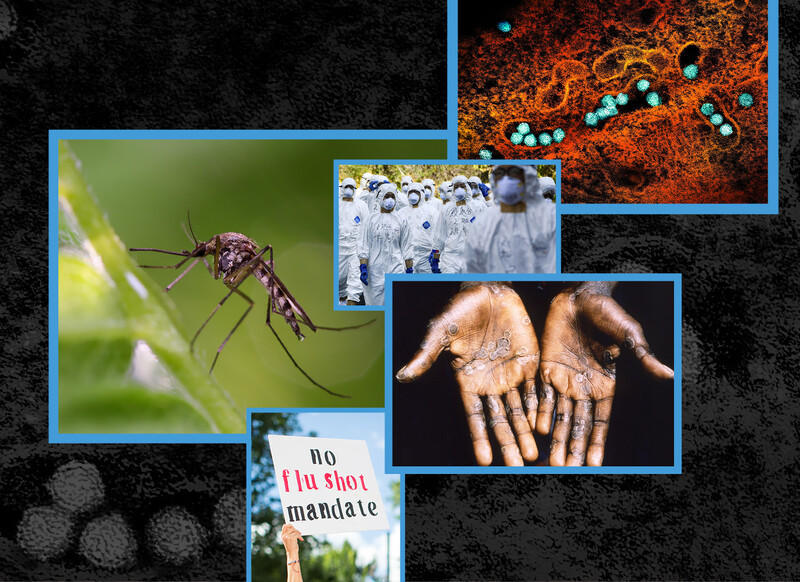
Consider the case of Maria, an HIV-positive mother. When Maria’s daughter Amelia was born, the baby contracted HIV. As the child grew up, Maria told her that the medication she was taking was for an unnamed blood condition. Amelia was approaching 13, three years older than the age at which clinicians would usually start telling a child about her condition. When doctors tried to explain to Maria that it was important that Amelia know her HIV status in part because she could become sexually active soon and thus endanger other individuals, the mother refused. Although Amelia in fact had a boyfriend, the mother insisted she was a “good girl” and was saving herself for marriage. (The names and other details of this case have been changed.)
After working on a few such cases, Claude Ann Mellins, cofounder and codirector of a special-needs mental health clinic for families affected by HIV at New York–Presbyterian Hospital, called on Robert Klitzman, the director of bioethics at Columbia’s HIV Center for Clinical and Behavioral Studies, where she is also a researcher. “I asked him what my ethical obligations are when an infected kid who doesn’t know her diagnosis starts having sex,” she says. “Because unless they indicate an intention to harm themselves or somebody else, I’ve assured them of confidentiality. Do I have to break that confidentiality?”
Klitzman is a former psychiatrist who has been conducting bioethics research at the HIV Center for 15 years. He is especially well versed in the subject of HIV disclosure and has written several academic papers and two books on the topic. His interest in HIV-related ethical issues dates back to the late 1980s, when he worked with AIDS patients during his psychiatry residency in the early days of the epidemic. As the disease has moved across different populations — from gay to straight, old to young, men to women — he’s followed the social and ethical issues unique to each group. “I got interested in HIV partly because it was a social phenomenon,” Klitzman says.
Physicians make every effort to try to inform HIV-positive kids about their condition before they reach puberty, says Mellins, but like Maria, some parents don’t want their children to know, often because of a desire to protect them or because they’re afraid the children will blame them for giving them the disease.
Does Mother Know Best?
Until a child is 18, says Klitzman, the authority over all medical decisions lies with the parents or legal guardians. Physicians cannot override this authority unless it’s clear the parents’ wishes could harm the child. “As a society,” says Klitzman, “we believe that mothers have rights over the welfare of the child up until the point where a decision harms the child. If a Jehovah’s Witness says she doesn’t want her baby to get a blood transfusion because it’s against her religion, then at that point she’s harming the life of the child. The law says you can’t do that.”
After meeting with Mellins, Klitzman decided to broaden the discussion by bringing in a lawyer, an infectious disease specialist, a political scientist, child psychologists who, like Mellins, work with pediatric AIDS patients, and other experts. The group spent two days together, hashing out the issues raised by the kinds of cases Mellins works on. “It’s important to have that give-and-take with people with expertise in different areas,” says Klitzman. “These are interdisciplinary fields, but getting all these experts together in the same room is helpful because they talk in different languages, and they approach the same issue in different ways.” (The meeting led Klitzman, Mellins, and two colleagues — Stephanie Marhefka, then at Columbia, and Lori Wiener of the National Institutes of Health — to publish a paper based on the Maria and Amelia case this spring in the Journal of Clinical Ethics.)
Part of the reason Klitzman organized the meeting was the lack of ethical guidelines for clinicians working with perinatally infected teens. The last time the American Academy of Pediatrics published a guide for disclosing their status to pediatric AIDS patients was in 1999, when the average age of death for these kids was around 11. Back then, the problem of disclosure rarely came up; the children simply did not live long enough for it to become an issue. Now, because of medical advances such as antiretroviral therapies, most children born with HIV will survive into adulthood.
In the U.S., for example, pediatric AIDS has largely become an inner-city problem. According to the Centers for Disease Control and Prevention (CDC), the poorest neighborhoods of New York, Miami, and Washington, D.C., are the main hot spots for mother-to-child HIV transmission in the U.S. “Unfortunately, the majority of pediatric AIDS cases are in families who have been struggling with poverty and inner-city stressors for several generations,” says Mellins. “It’s a population that has been dealing with a lot of vulnerabilities even before HIV came into the picture.” Substance abuse is often a problem in these families, as is depression. Most women who pass HIV on to their infants don’t know their HIV status until the child tests positive, says Klitzman, so they’re coming to grips with their own diagnosis at the same time they’re trying to raise an HIV-positive child, oftentimes on their own. Clinicians, says Klitzman, need to take all these factors into consideration when they decide, case by case, how to handle disclosure.
Duty to Warn
As challenging as it is to tell a pediatric patient her status, possibly against the wishes of the parent, figuring out when to breach a pediatric patient’s confidentiality and notify the sexual partners can be even more difficult. Most states have “duty to warn” laws, which require therapists to notify a third party if that individual’s health is at risk. But that doesn’t make clinicians’ decisions cut-and-dried: Many laws rely on doctors’ discretion. On the one hand, healthcare workers have an obligation to protect the public, but on the other, they don’t want to risk losing their patients by betraying their trust and risking those patients no longer getting the care they need.
That the patients in these cases are teenagers further compounds the problem, says Klitzman. “What if a patient admits she has a boyfriend, but it’s not clear whether or not she’s having sexual relations with him yet?” he asks. “Kids don’t talk about this with their parents or say, ‘Gee, Mom, I just had sex for the first time yesterday.’” Clinicians have to make a difficult judgement about whether they think they’re being told the truth or not.
With the testing of pregnant women for HIV becoming more widespread in the U.S., the number of infants diagnosed with HIV/AIDS has dropped
dramatically since the mid-1990s. The earlier mothers are tested, the earlier they can start precautionary measures — medication during the pregnancy, caesarean birth — that significantly reduce the rate of transmission to the fetus (down to 2 percent, according to the CDC). As the war against pediatric AIDS is being won medically in the U.S., another fight is now taking place overseas. In sub-Saharan Africa, where the majority of pediatric AIDS cases are concentrated, hundreds of thousands of infants are born with HIV each year, according to the World Health Organization. With prevention programs still in the early stages, the infection rate shows no signs of slowing, at least in the near future.
The physicians working there are already confronting many of the same disclosure issues Mellins has faced in New York, says Elaine Abrams, a pediatrician who runs mother-to-child transmission prevention efforts in Africa through Columbia’s International Center for AIDS Care and Treatment Programs. As medication becomes more available, she says, the ethical dilemmas doctors are facing there are bound to increase.
Being prepared to handle each country’s cultural milieu is key, says Klitzman. “In some countries, 15-year-olds are considered adults. In others, kids start having sex at 13 or 14. In one culture, doctors may have all the authority, whereas in many African countries, traditional healers have the authority and Western doctors are looked at as intruders.”
Klitzman advocates cultural sensitivity training for all clinicians working abroad. “It’s extremely important to understand different cultural beliefs and respect them. One can challenge them — certainly, you may need to challenge them in the name of public health — but the perspective needs to shift from quantitative to qualitative,” he says.
A Measure of Comfort
Mellins, who has three children, says she understands the struggle parents go through when it comes to telling an infected child their status. “It’s very difficult to tell kids they have a chronic, highly stigmatized, potentially fatal illness,” she says. “But now that HIV has become a chronic illness that you can treat and keep under control, telling a child has become a little bit easier.”
While Mellins and her colleagues at the mental health clinic have encountered some difficult cases, she says, so far they have always found a way to work with parents who resisted telling their children their HIV status. “I’ve never heard of anyone at the clinic having to trump a parent,” she says. “You have to work really intensely with the family and tell the parents how it’s better for the child to hear the diagnosis from them, especially when the child is getting to the age where they’re going to start asking questions about their medication.”
Because each case is so different from the next, it would be impossible to devise a set of one-size-fits-all guidelines for treating perinatally infected HIV patients, says Klitzman. Still, he and his co-authors offer some suggestions in their Journal of Clinical Ethics paper, such as outlining the possible outcomes of disclosure for each party — parents, patient, sexual partners — and considering the potential benefits and dangers each outcome would produce. “Therapists weighed the interests of the daughter, the boyfriend, and the mother,” says Klitzman, referring to the Maria and Amelia case, “and unfortunately, these interests can compete with each other, forcing therapists to choose.”
In the end, Maria agreed to tell Amelia.


